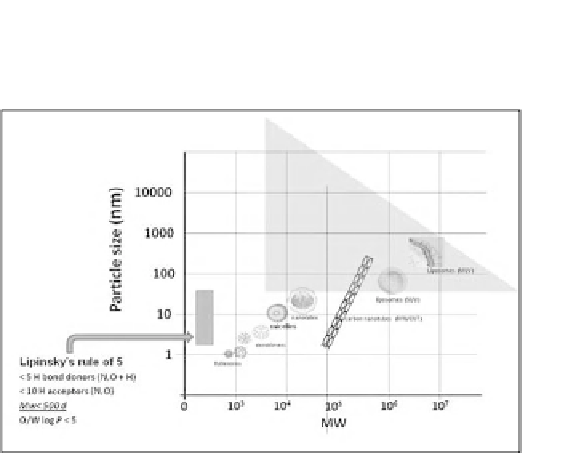Biomedical Engineering Reference
In-Depth Information
conventional drugs into the nano dimension, which is surveyed by
the immune system with “eager eyes” (Figure 11.1).
Figure 11.1
Immune recognition of nanoparticles. Map of diff erent
nanoparticles on a diameter vs. Mw chart; blue shaded area is the region of
immune recognition. Liposomes and carbon nanotubes, with their length,
fall into the “sight” of the immune system, while smaller nanoparticles
(fullerenes, dendrimers, micelles and complex polymeric particles (e.g.,
nanolatex) are, in theory, below the size and Mw thresholds of immune
recognition. The green “Lipinsky box” shows the position of traditional
small-molecular weight drugs [62]. See also Color Insert.
11.2
Types and Features of Immune Responses
to Liposomes
The immune eff ects of liposomes can be stimulatory or inhibitory,
weak, moderate or severe, all with a broad individual variation in
the time of onset and duration (Table 11.1). In additions to the above
time-related diff erences, the immune eff ects of liposomes also diff er
in the part of the immune system primarily aff ected, i.e., whether
the nonspecific, innate, or the specific, adaptive arm of immunity
undergoes stimulation or suppression. The term
reactogenicity
is
used to imply a broad activation process that involves the innate as
well as the adaptive arm of the immune system, while
immunogenicity
usually refers to specific antibody induction with the involvement of
B and T cells. Of note,
antigenicity
, i.e., the capability of liposomes
to expose antigens, does not necessarily mean reactogenicity or
















Search WWH ::

Custom Search